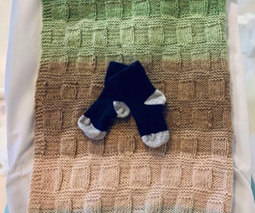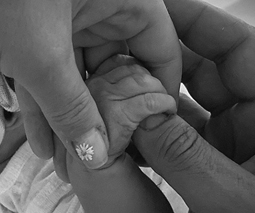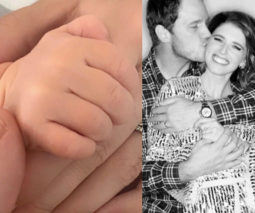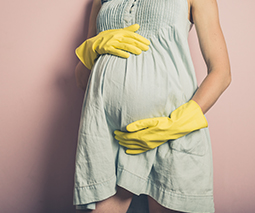Conquer the fear: What all pregnant women need to know about labour and birth
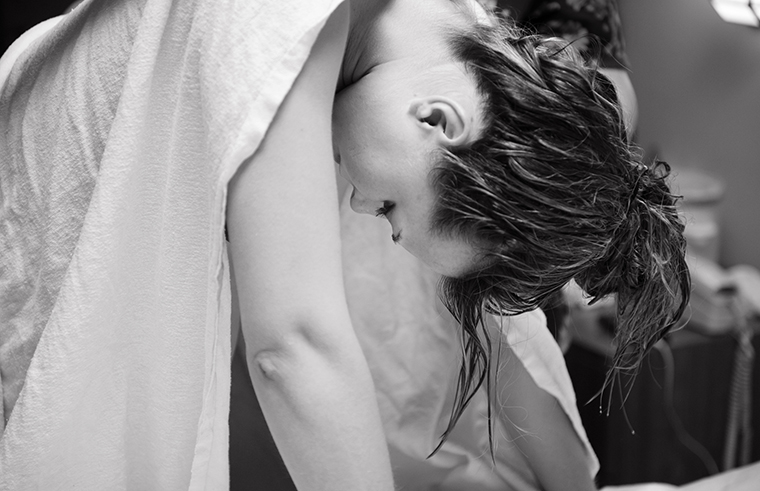
While labour and birth is an undeniably primal process, it can become complicated when fear gets in the way, so ensuring you understand what your body is doing is really important.
In a recent episode of Bellies, Bits and Babies, physiotherapist and women’s pelvic floor expert, Heba Shaheed speaks with Edwina Sharrock, midwife and founder of Birth Beat, an online provider of antenatal classes about how pregnant women can best prepare themselves for the journey ahead – both physically and mentally.
Labour starts in the brain
To start with, Edwina stresses that we have to really understand the physical process of labour and birth.
“A great way to explain it is to think of you standing up straight like a coffee plunger. Up the top on your head, that coffee plunger being pushed – this is a great little analogy because oxytocin is triggered in your brain. Oxytocin is the hormone that tells your uterus to start contracting. And your uterus is sitting up on top of your baby’s bottom in your tummy.
“The oxytocin from your brain tells the uterus to contract which pushes on the baby’s bottom which pushes on the baby’s head which pushes on the cervix. So think of it like that lovely coffee plunger effect. What we want is for that baby’s head to be pushing on the cervix; the cervix dilates. And we want the cervix to open because that’s where the baby’s head needs to pass through before you start to push the baby out of your vagina. That’s the process.”
But oxytocin is a very shy hormone. “If you’re embarrassed or scared or fearful, that’s at the very top of the coffee plunger … you won’t produce so much oxytocin.”
Get educated, says Edwina firmly, “Remove the fear. And you’re going to then have more oxytocin and it’s that whole flow-on effect. Like so many things in life, we try to pretend that we’re not fearful of birth – [but it’s natural that] we would all be fearful of anything, if we don’t understand it.”
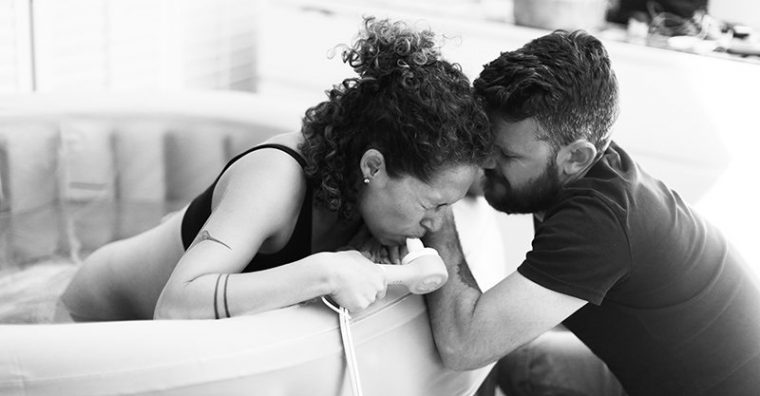
The ‘right position’ for birth
Edwina believes that there is no right or wrong position to labour and birth. It’s most important to do whatever feels comfortable for you.
“The thing is listening to your body. A lot of women in labour and birth will be so terribly uncomfortable but think that they’re in the position that they’re meant to be – lying on a bed.”
Better positions to encourage labour to progress quickly are those where the baby doesn’t have to travel uphill (which it has to do when you are lying on your back or side on a bed).
“I always encourage my mums to be doing a lot of time on all fours, so getting down on their hands and knees. A lot of mums also find that much more comfortable in labour, they get a lot of lower back pain and a lot of pelvis pain, but also leaning over and taking a bit of that pain off their lower back and their lower pelvis. So the ideal things to be thinking about are how you sit, how you stand, how your posture is in pregnancy.
“Think about getting your legs open wider than your hips stance, bending over – that is the ideal position. You are obviously also not going to be able to stand in that position for a long amount of time; it can be quite exhausting. So it might be sitting on the toilet, sitting on a birth stool, getting down on all fours, leaning over a bed leaning over a beanbag, anything like that is an open upright pelvis position because you are just thinking about the ideal position that makes the most space for the baby’s head to pass through.”
Listen to Edwina Sharrock on Bellies, Bits and Babies:
Labour and birth is a marathon
Understanding that we need to start training for labour during pregnancy is key to success too.
Heba explains, “A lot of women don’t realise that they have to train for this – you can’t just expect to be able to get into that active birthing position where you have to hold a squat position, or hold standing postures, or have your legs wide open if you haven’t trained for it.”
Birth is like a marathon and just like any endurance event, you can’t do all the prep at the last minute. “You need to train for it throughout your pregnancy. You need to be doing and practising these postures. It could be in an exercise class or it could just be at home spending five or 10 minutes – and you know that labour is not going to take five or 10 minutes! – you really got to build up to it.”
Healthy baby, healthy mum
No matter how things progress through labour and birth, the power of a positive mindset can’t be understated. Edwina suggests having ‘birth wishes’ rather than a ‘birth plan’.
“[Birth wishes can outline the] things that are really important to you, discussing the things that you don’t want or you do want, but then also accepting that there are some things that are a bit of a non-negotiable. There is so much pressure put on women around the way that they birth. I think in Australia we really need to start that conversation around healthy baby, healthy mum; that at the end of the day is the most important thing. But be educated be empowered and have birth wishes so that you can have your best birth and be as close to what you want for your birth wishes. But what I see is that people feel really disappointed.”
The reality is sometimes things aren’t going to go according to plan for all women. We need to acknowledge that and support those women, but still celebrate that in the end there is a healthy baby and a healthy mum. And that’s the best outcome of all, isn’t it?
You can find more pelvic health tips and tricks for from Heba Shaheed in Bellies, Bits and Babies. In six practical weekly episodes, Heba shares her expertise to improve women’s pelvic health before and after childbirth.
You can listen to Bellies, Bits and Babies with Apple Podcasts and Google Podcasts




